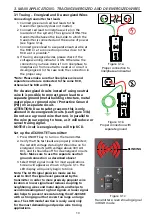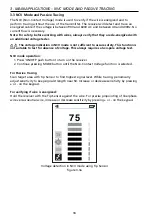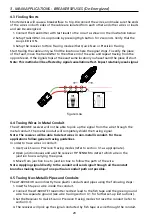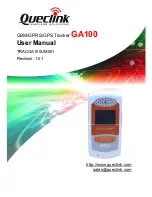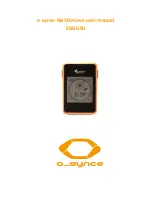
8
2.2 AT-6000-TE Transmitter
The AT-6000-TE Transmitter works on energized and de-energized circuits up to 600 V AC/DC
in Category I through Category III electrical environments.
Transmitter signal modes:
High Signal (Hi) –
Recommended for most wire tracing applications on energized and
de-energized circuits including breaker/fuse location. This function will be used most of the time.
Low Signal (Lo) –
The LOW mode function is rarely used, and only for the most demanding
and precise wire tracing applications. It limits the signal level generated by the transmitter
in order to pinpoint the wire location more precisely. A lower signal level reduces coupling
to neighboring wires and metal objects, and helps to avoid misreading due to ghost signals.
A lower signal also helps to prevent oversaturating the AT-6000-RE with a strong signal that
covers too large an area.
Loop mode
(initiated by pressing and holding the Hi button for 2 seconds) – use when
working with closed loop de-energized circuits, such as shorted wires, shielded cables or de-
energized wires that are grounded on the far-end.
How is Loop function different from the Hi or Lo settings when using test leads?
Both Hi and Lo modes
generate a signal in all open branches of the de-energized circuit.
This is useful when tracing open wires. Hi/Lo modes will NOT work on wires that are
grounded on the far-end because the signal cannot be generated.
Loop mode
generates a signal (current flow) in closed loop de-energized circuits only. Loop
mode is used to pinpoint the location of a short (because the current will not be able to
flow in open branches) and to trace wires that are grounded on the far end (because the
loop is closed via ground connection).
Note: Loop mode only works on de-energized circuits. It is automatically disabled when
transmitter is connected to energized line/phase with test leads.
2. KIT COMPONENTS
figure 2.2a
figure 2.2b
figure 2.2c
figure 2.2d

















